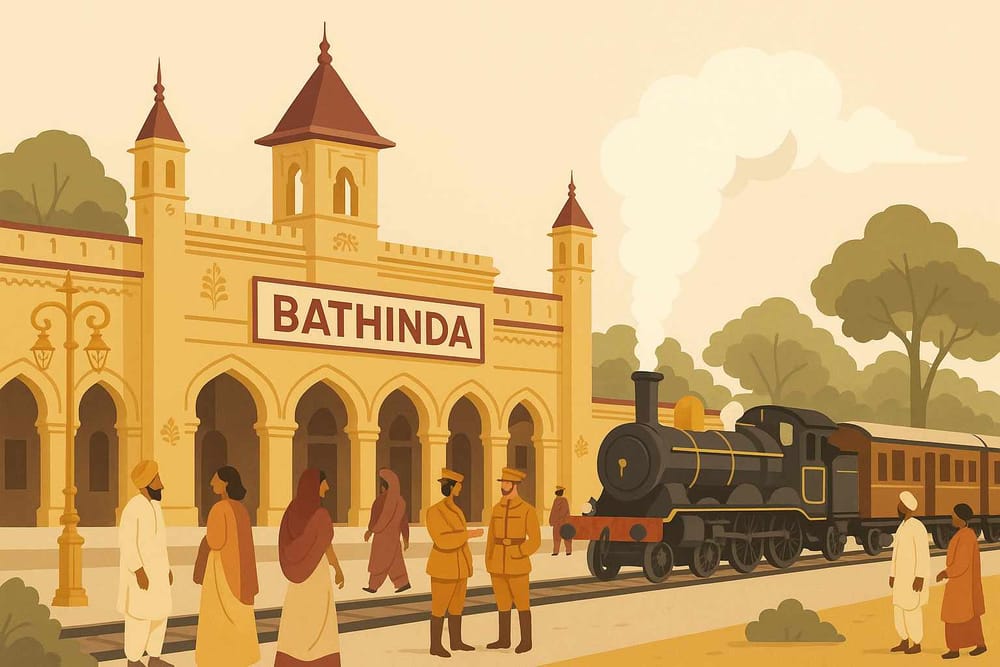
The British Era in Bathinda - A 2025 Historical Overview
Walk through the bustling streets of Bathinda today, and you can almost feel the whispers of history in the air. Beyond the modern storefronts and the vibrant energy of Punjab, there lies a story etched in old buildings, railway lines, and even the very soil of the land. It’s the story of the British era, a time of profound change that forever altered the course of this historic city. It wasn’t just a chapter in a textbook; it was a period that challenged, changed, and ultimately shaped the Bathinda we know and love.
A Crossroads of Power: When the British Arrived
The arrival of the British in Punjab was a turning point for the entire region, and Bathinda, with its strategic position, found itself at the heart of this transformation. The British saw Bathinda not just as a town, but as a crucial administrative and military hub. They established cantonments and bases, marking their authority on the landscape. During this period, much of what we now call the Bathinda district was actually part of the princely Patiala State, with Bathinda city itself serving as a key tehsil. This created a complex dynamic, with British administration layered over existing local power structures.
The Soil and The Steel: Economic Tides of Change
The economic impact of British rule was felt most deeply in the fields. The traditional agricultural rhythm of Bathinda was disrupted as new land revenue systems took hold. Farmers were encouraged, and often pushed, to grow cash crops like cotton to feed the mills of Britain. While this connected Bathinda to a larger global trade network, it often came at a cost for the local farmer, who faced new taxes and the risk of debt.
But this era also brought significant developments. The British undertook massive irrigation and canal construction projects, which helped enhance the region's agricultural productivity and manage its water resources. Perhaps the most visible change was the arrival of the railways. The chugging of the steam engine was the sound of a new era, turning Bathinda into a bustling economic junction. This new connectivity boosted trade and commerce, though the benefits weren't always shared equally among the people.
A New Classroom, A Changing Society
The influence of the British wasn't limited to governance and trade; it seeped into the very fabric of society. English-medium schools were introduced, opening up new avenues of learning and creating an educated class that would later play a role in administration and the freedom struggle. You can still see the architectural legacy today, where traditional Punjabi designs blend with colonial aesthetics in some of the older buildings. This cultural exchange created a unique synthesis, a blend of tradition and modernity. Christian missionaries also brought new social norms and beliefs, adding another layer to the city's diverse cultural tapestry.
The Flame of Freedom in the Heart of Punjab
While there was collaboration, there was also resistance. The spirit of independence was strong in Bathinda. The people did not remain silent spectators to foreign rule. The city and its surrounding areas became active centres in the struggle for freedom. Many local leaders and ordinary citizens participated in protests and movements, contributing their voices and their courage to the larger fight for India's sovereignty. The law enforcement systems established by the British were often used to maintain order, but they could not quell the growing desire for self-rule that burned brightly in the hearts of the people.
The Legacy in Brick and Mortar
So, where can we see the remnants of this era today? The most prominent are the railway lines and the grand old Bathinda Railway Station, which continue to be lifelines for the city. Some administrative buildings and educational institutions founded during that time still stand, serving as silent witnesses to history. These structures aren't just old buildings; they are a vital part of Bathinda's heritage, reminding us of the city's journey through time and the complexities of its past.
Understanding these historical layers is what brings our heritage to life. At Bhaktilipi, we believe that connecting with our roots through stories and knowledge enriches our present. Exploring these narratives helps us appreciate the resilience and spirit of our ancestors. For those who cherish these connections in their daily lives, our collection of authentic puja essentials is thoughtfully curated to help you honour your traditions with devotion and purity at home.
Looking Back to Move Forward: Bathinda Today
The British era in Bathinda is remembered as a period of immense change, with both positive and negative consequences. It brought modernisation in infrastructure and education but also economic hardships and a loss of autonomy. Today, the city honours this complex history by preserving its monuments and sharing its stories. By understanding how British colonial rule impacted its governance, economy, and culture, we gain a deeper appreciation for the resilient and vibrant city that Bathinda has become. It stands as a testament to a people who adapted, resisted, and ultimately forged their own destiny while carrying the lessons of the past into the future.
A passionate group of people dedicated to preserving India's knowledge of Dharma, Karma, and Bhakti for ourselves and the world 🙏.
